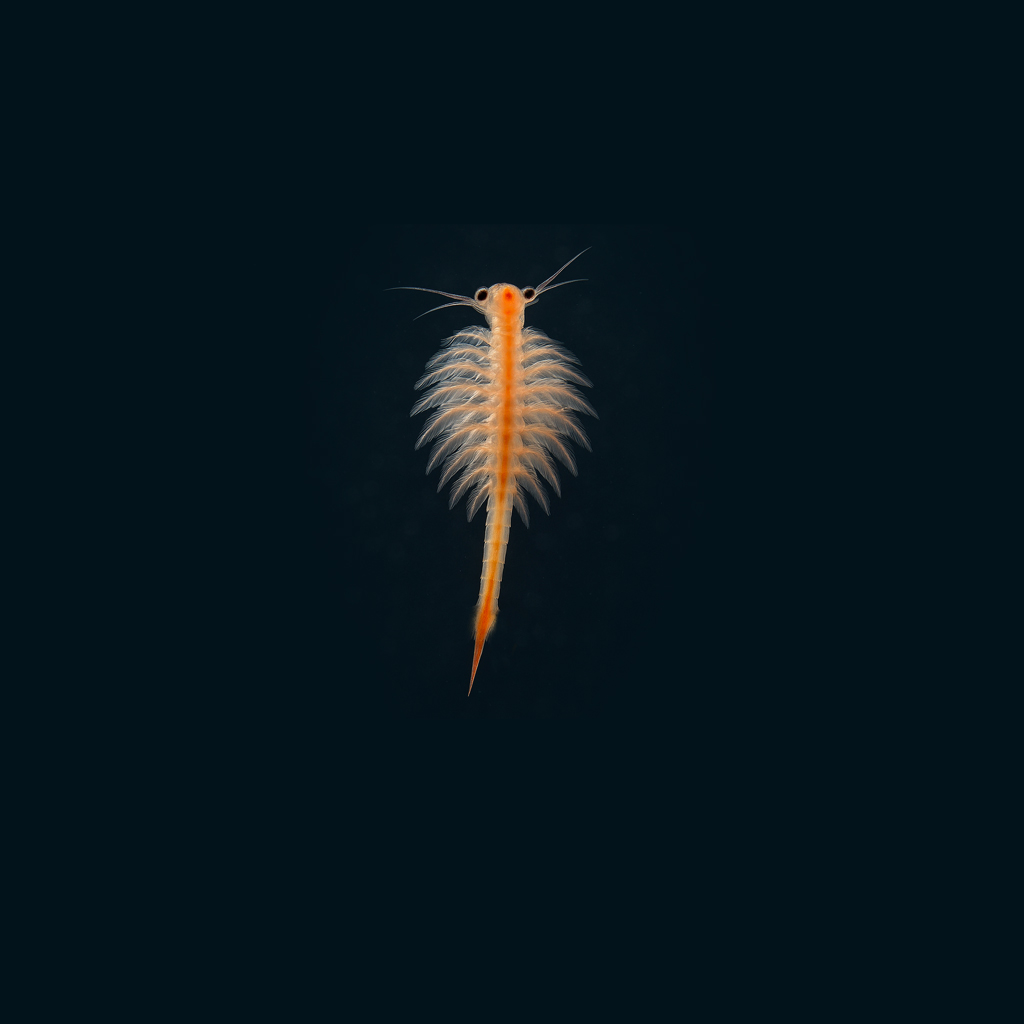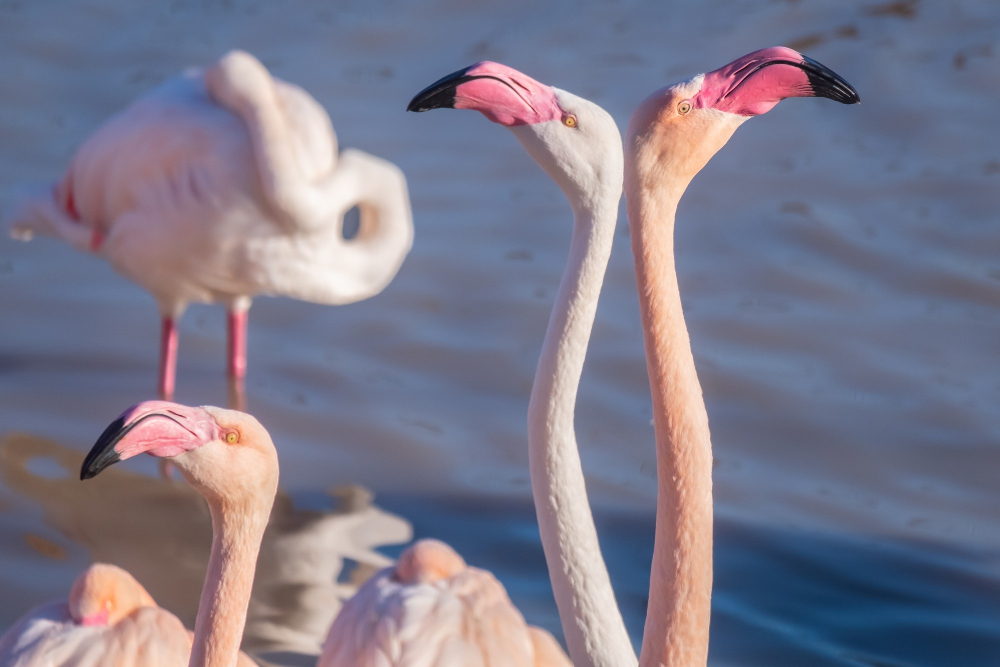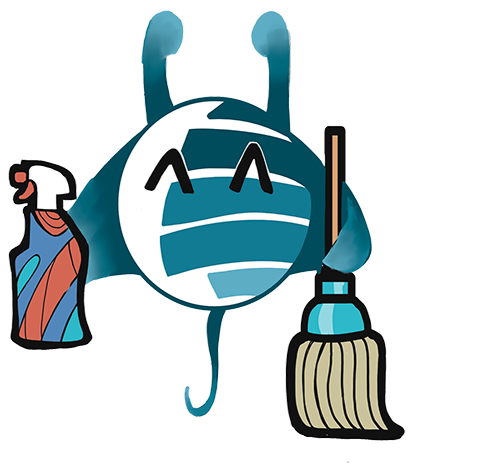It is the natural “secret” of the red-pink color of flamingos.
 A tiny animal of that same color, whose small size is inversely proportional to its presence on earth. In fact, the maximum length of an adult specimen of Artemia salina, the species that appeared on the planet in the Triassic, is just one centimeter, therefore a good one hundred million years ago, when dinosaurs also inhabited the planet. And since then, the tiny crustacean, the only representative of the Artemia genus and the Artemiidae family, has retained its main morphological characteristics, thanks to which it has had the ability to adapt to the most varied and extreme environmental conditions and to become a true model of resilience in the animal kingdom.
A tiny animal of that same color, whose small size is inversely proportional to its presence on earth. In fact, the maximum length of an adult specimen of Artemia salina, the species that appeared on the planet in the Triassic, is just one centimeter, therefore a good one hundred million years ago, when dinosaurs also inhabited the planet. And since then, the tiny crustacean, the only representative of the Artemia genus and the Artemiidae family, has retained its main morphological characteristics, thanks to which it has had the ability to adapt to the most varied and extreme environmental conditions and to become a true model of resilience in the animal kingdom.
Artemia lives in every part of the globe, so it is a so-called cosmopolitan species, except in the oceans, and survives between 5 and 40 degrees in almost fresh to very salty waters, having as its habitat the more or less brackish coastal ponds and salt marshes, from which the epithet of its scientific name "salina" derives. The safest places, since the high salinity keeps away most of the potential predators. But more commonly, due to its appearance, it is known as sea-monkey.
The body features include the head, with three eyes and four antennae; the thorax with eleven limbs and a series of lamellae, which allow it to breathe, but also to get rid of excess salt introduced with the water from which it filters nutrients; and the almost transparent abdomen from which the intestine can be seen. The species presents a notable sexual dimorphism, since the males have a larger jaw. Another characteristic of the species, to facilitate nutrition through water, is swimming with the back facing downwards.
Since they are extremely small, they feed on bacteria, phytoplankton and all possible nutrients that do not exceed the size of 50 microns. And it is precisely from food that their particular pink and orange color comes, in fact the small green algae Dunaliella salina (which also lives in the same habitats with a high percentage of salinity) that they feed on, produces beta-carotene. The substance that then ends up in the diet of flamingos that, in turn, feed on Artemia. The more or less pronounced pink or red-orange color of the waders that populate the same brackish environments depends, in fact, on the percentage of Artemia present in their diet: the more crustaceans they swallow, the more brightly colored their legs, beak and plumage are, making them unmistakable in their beauty.

Artemia crustaceans have a lifespan of around seven hundred days, during which they go through various larval stages, before becoming adults and, therefore, entering the reproductive stage, which is another highly characteristic element of the species. Artemia reproduces sexually at temperatures between 20 and 35 degrees and it is necessary for there to be water in the ponds in which it lives. When this condition is lacking, due to evaporation of the water and in periods of prolonged drought, in dry ponds Artemia reproduces by parthenogenesis, laying cysts, or eggs with a particularly resistant shell, which remain "suspended" even for long periods (cryptobiosis), even up to ten years, ready to hatch as soon as the environmental conditions are favorable again. From the eggs, larvae called nauplii of a few millimeters are born, which draw nourishment from the yolk sac and, therefore, can remain alive without the supply of other nutrients for two or three days after hatching. Nauplii are prey for numerous species of marine animals, which carry out a considerable selection of organisms before they develop into the subsequent larval stages. Furthermore, when a reproductive emergency occurs, for various reasons, it can also reproduce asexually.
The versatility of this species, its enormous capacity for resilience in adapting to the most varied environmental conditions in which it lives, even the most extreme and least favourable, has made it the totem animal of the aboriginal populations of Australia.



